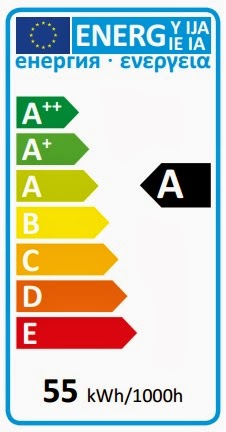Il Parlamento europeo ha deciso di vietare dopo il 2015 alcune sorgenti luminose
tradizionali a scarica ad alta intensità. Una delle domande più frequenti che ci
vengono rivolte è se i sistemi ad induzione QL rappresentano una valida alternativa
ai sistemi tradizionali spesso inefficienti. La risposta è sì!
Nella maggior parte dei casi gli apparecchi illuminanti sono ancora in buono stato.
Solo le sorgenti luminose inefficienti non soddisfano i requisiti. Sostituirle negli
apparecchi esistenti con i sistemi ad induzione QL ridurrà i costi energetici, di
manutenzione e i danni sull’ambiente in termini di emissioni di CO2.
In che modo i sistemi QL ad induzione sono efficienti?
l’ illuminazione professionale devono avere un’etichetta energetica. Questa etichetta,
denominata Energy Rating,consente ai consumatori di confrontare l'efficienza energetica
degli elettrodomestici. I sistemi di illuminazione ad induzione QL hanno classe di
efficienza energetica A.
* * *
The European
Parliament has decided to ban certain HID products after 2015. Often we receive
questions whether QL induction can be the alternative to these energy inefficient
lamp systems. The
answer
is yes!
In most cases the luminaires are still in
good condition. Only the inefficient light source does not meet the requirements.
Retrofit the existing luminaires to QL induction will reduce
costs and the environmental effects in terms of CO2 emissions.
How energy efficient is QL induction?
Since
1 September 2013, light sources used for professional lighting applications
placed on the European market need to be supplied with a energy label. This
Energy Rating label enables consumers to compare the energy efficiency of
appliances. The QL induction lighting systems are graded in energy efficiency label
A.

Nessun commento:
Posta un commento